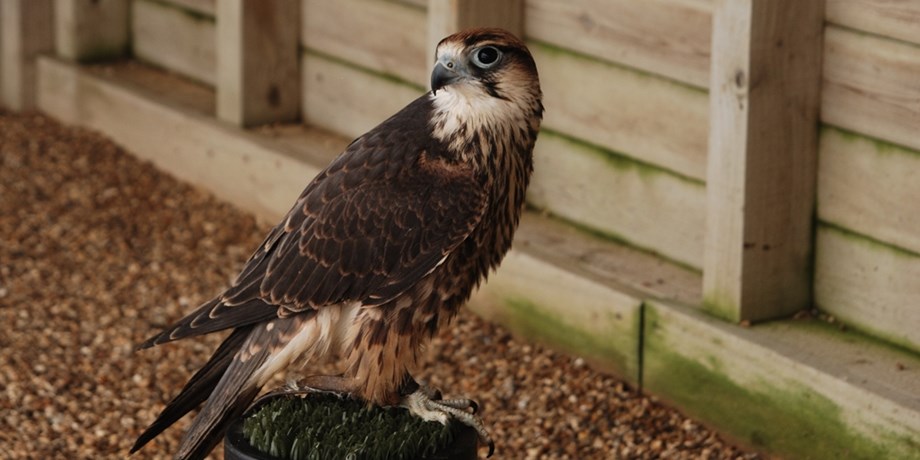Lanner falcon: Red Data Book of Armenia

Falcons and caracaras – Falconidae
Status. A poorly studied species of low numbers. Listed in the Red Data Book of the former USSR. Listed in the IUCN Red List of Threatened Species (ver. 3.1) as Least Concern. According to IUCN criteria categorized as Data Deficient DD.
Distribution. The subspecies is distributed from Southern Europe to Asia Minor and the South Caucasus.
Distribution in Armenia. Nestles in the central part of the country.
Habitats. Tracts of semi–desert and mountain grassland alternating with cliffy mountains.
Biological traits. The aerie is built on a cliff brink, tree or in a crevice away from direct sunlight; the other raptor’s aerie can be taken over. Eggs are white with reddish–brown speckles, 3–4/clutch, size 50 mm. Eggs are laid once a year, probably in early March to early April. The brooding period is ca. 1 month. Hatchlings emerge in late April to early May. Preys principally on birds.
Population size and its trends. The prey base has dwindled, mainly due to the reduction in chukar abundance. Available information is insufficient to judge about the population size. Existence of only one pair is reliably known.
Major threats. Possibly, intensive land encroachment in semi–deserts and grasslands and the use of toxic chemicals which impinges on reproductive functions and directly on adult individuals. Another threat is rapid development of the falconry market in the Middle East which stimulates fledgling removal and adult captures.
Conservation measures. It is essential to identify and stringently protect the lanner falcon’s nests throughout Armenia, diminish adverse human influence on the population and to promote protection of this species and its habitats.
Suggestions
 The Ministry of Environment sent a letter international partners to draw their attention to the real danger of environmental disasters as a result of Azerbaijan's large-scale aggression towards the territory of Armenia
The Ministry of Environment sent a letter international partners to draw their attention to the real danger of environmental disasters as a result of Azerbaijan's large-scale aggression towards the territory of Armenia
 Vicia pisiformis: Red Data Book of Armenia
Vicia pisiformis: Red Data Book of Armenia
 Vavilovia formosa: Red Data Book of Armenia
Vavilovia formosa: Red Data Book of Armenia
 Trigonella capitata: Red Data Book of Armenia
Trigonella capitata: Red Data Book of Armenia
 Trigonella astroides: Red Data Book of Armenia
Trigonella astroides: Red Data Book of Armenia












